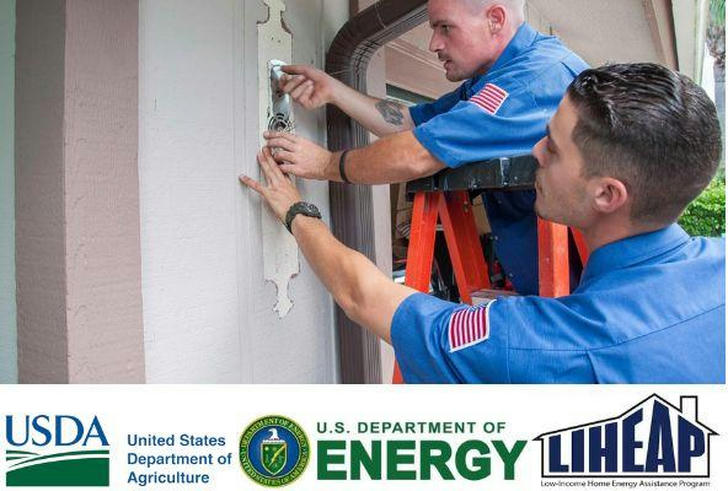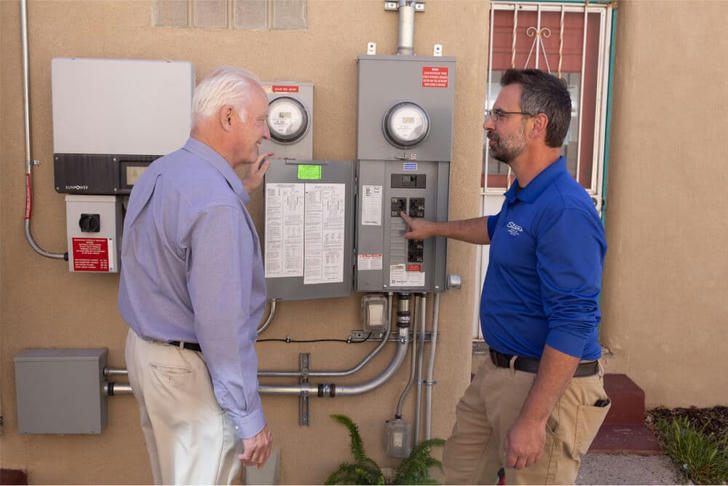Get Up to $10,000 for Home Repairs – Here’s How!
Home repairs, especially for plumbing or electrical issues, can be costly, particularly if you’re on a fixed income. But the good news is there are government programs to help low-income homeowners and seniors cover these repairs. These programs offer grants up to $10,000 and low-interest loans to help cover essential repairs. Here are some of the top options available to you.
What Are These Programs and How Can They Help You?
If you're struggling with home repairs like plumbing or electrical issues, these programs are here to help. Designed specifically for low-income homeowners and seniors, these programs can assist with repairs that may be too expensive to handle on your own. Whether it's fixing a broken pipe or outdated wiring, these resources can help make your home safer and more comfortable. Here’s a look at some of the most helpful programs available to you:

1. Section 504 Home Repair Program (USDA)
Who Can Apply: If you're a low-income homeowner (especially 62 or older), you might qualify.
What It Covers: The program can help you with essential repairs to plumbing and electrical systems to keep your home safe and functional.
How Much You Can Get:
- Grants up to $10,000 (for those 62 years or older)
- Loans up to $40,000 with an interest rate of 1%
Why It’s Helpful: This program helps you fix problems before they become dangerous, like faulty wiring or leaky pipes, without worrying about paying a huge bill.
2. Weatherization Assistance Program (WAP)
Who Can Apply: Low-income homeowners, especially those with elderly or disabled family members.
What It Covers: The program improves energy efficiency by fixing things like old electrical systems and insulation to help your home stay warm in winter and cool in summer.
How Much You Can Get: The program provides an average of $6,500 for weatherization improvements, but in some cases, funding can go up to $8,000 or more, depending on the extent of work needed and the state’s funding.
Why It’s Helpful: This program makes your home more energy-efficient, which means lower energy bills—and it can help you stay comfortable and safe, year-round.
3. Low-Income Energy Assistance Program (LIHEAP)
Who Can Apply: If you have a low income, LIHEAP can help.
What It Covers: LIHEAP assists with utility bills, but it can also help with energy-related repairs like heating, cooling, or electrical system fixes.
How Much You Can Get: You may qualify for up to $10,000 in assistance.
Why It’s Helpful: If you’re struggling to pay high utility bills or need your electrical system repaired, LIHEAP can help with both—so you don’t have to choose between keeping the lights on or fixing your home.
4. Clean Water State Revolving Fund (CWSRF)
Who Can Apply: Homeowners can access this program through their state or local government.
What It Covers: This program focuses on water infrastructure—helping to repair old pipes or fix plumbing systems.
How Much You Can Get: States offer varying amounts of assistance, often up to $20,000 or low-interest loans.
Why It’s Helpful: If you’re dealing with old or damaged plumbing, this program can help you get safe, clean drinking water again.
5. Habitat for Humanity and Rebuilding Together
Who Can Apply: These organizations help low-income homeowners, including seniors or those with disabilities, with urgent home repairs.
What It Covers: Repairs for things like plumbing, electrical systems, and even general home safety.
How Much You Can Get: These programs vary in value but can provide repairs worth $5,000 to $20,000 depending on the severity of the issues.
Why It’s Helpful: These nonprofits help make your home safer and more livable by relying on volunteer labor and community donations, reducing the financial burden on homeowners.

FAQ: Frequently Asked Questions About Repair Subsidy Programs
Q1: Can I apply for more than one program?
A1: Yes, in many cases, you can apply for multiple programs! For example, you could use a 504 grant for electrical repairs and a WAP grant for insulation and energy improvements. Always check the eligibility criteria for each program to make sure you meet the requirements.
Q2: How do I know if I qualify for these programs?
A2: Eligibility is usually based on your income and age (for seniors, especially 62 and older). Most programs require you to meet certain income limits and live in a low-income household. Each program has different guidelines, so make sure to review them carefully. You can often find detailed information on their respective websites.
Q3: Can I use these programs to pay for my entire home repair?
A3: These programs generally help with specific types of repairs—like plumbing, electrical systems, or energy efficiency improvements. They may not cover the cost of a complete home overhaul. However, combining multiple programs could cover a significant portion of your repair costs.
Q4: How long does it take to get approval?
A4: The approval process varies depending on the program and your situation. Some programs may take a few weeks to a couple of months. It’s important to apply early and follow up with the respective agency to stay updated on your application status.
Final Thoughts
If you're struggling with home repairs, these programs can help reduce the burden and make your home a safer place. From fixing plumbing and electrical systems to improving energy efficiency, there’s support available. Don’t hesitate to apply and explore all the resources at your disposal. It’s time to get the help you need!
Feel free to share this with anyone who might benefit from these programs! 🙂
